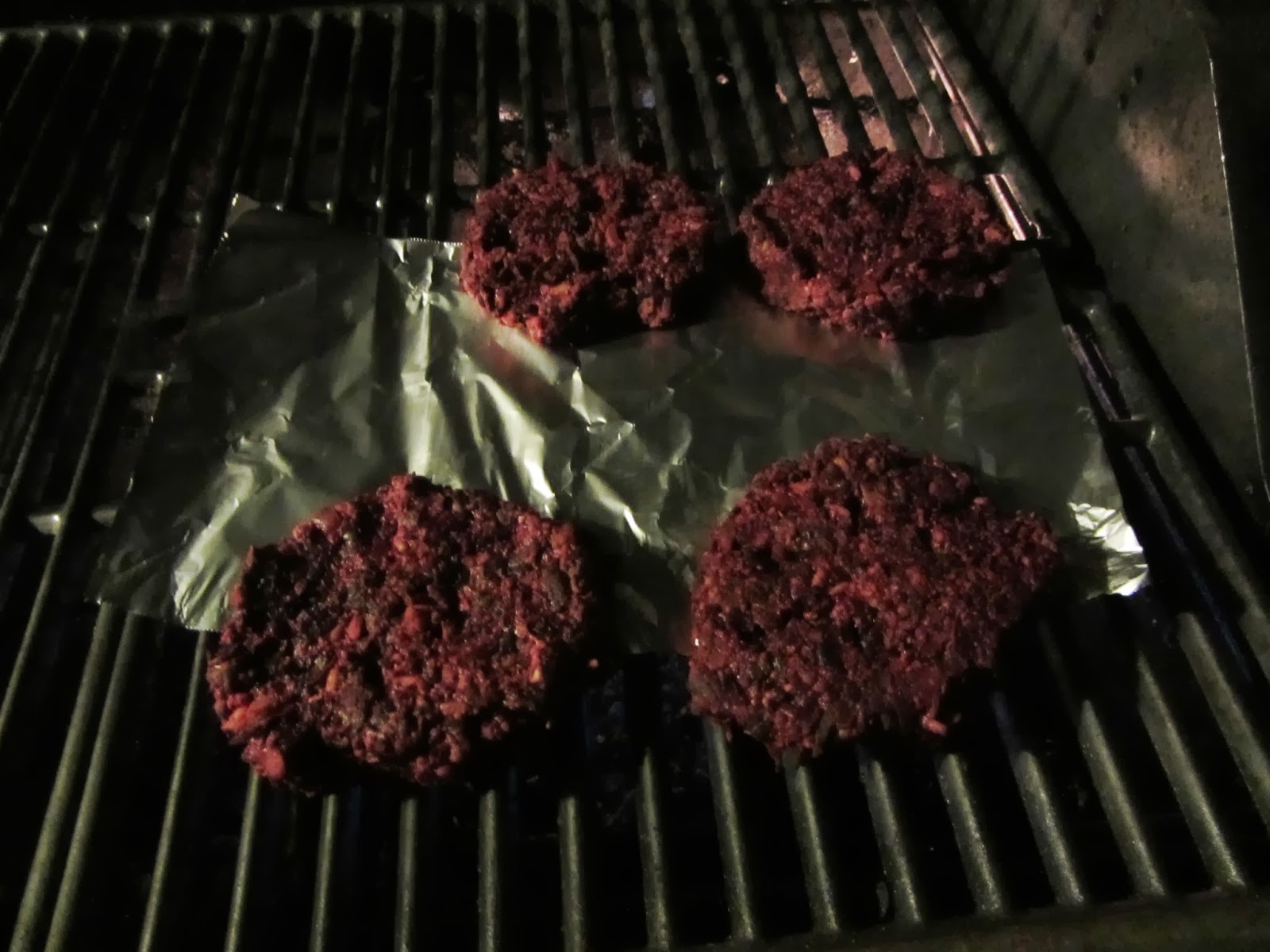As a vegetarian for the last fifteen years, an important go-to meal is a good veggie burger. I have crafted many variations over the years. I’ve made Maui style burgers with pineapple, Swiss cheese, and tomato; Southwestern with Ortega chili peppers, salsa, and pepper jack cheese; California style with sprouts, avocado and purple onion; German style with sauerkraut and mustard; Italian style with marinara sauce and mozzarella, even Greek style with roasted red peppers, Mediterranean Tabouli (Tabbouleh) salad, and hummus in a pita. You name it, if you can put a veggie burger in the mix, I’ve done it!
But a frozen, prepackaged veggie burger was always the common denominator. Some are better than others, and some are downright nasty (no, I’m not naming names). Upon closer inspection of the labels most of the top brands contain soy, which is meeting with contention in some nutritional circles now-a-days. So what if I want to be in charge of exactly what goes into my veggie burger? I could put in some very healthy and tasty alternatives. I could also make them blood red, to satisfy that carnivorous urge without breaking my beef fast. Check out my made from scratch version of a beet burger.
Mel’s Beet Burgers
(Makes four, serve two and freeze the other two)
(Or double the recipe, serve four and freeze four)
1 onion (1/2 sliced, 1/2 minced)
2 cloves garlic minced
1 tbsp butter
1 tbsp cider vinegar
1 can black beans and 1/4 cup raisins (processed until rough chop in food processor)
1/8 cup oat bran
1/4 cup cooked brown rice
2 roasted and peeled beets
1 tsp Dijon mustard
1 tsp cumin
salt and pepper to taste
romaine lettuce
1 avocado (1/2 mashed for each burger)
buns or grilled bread
(optional) smoked blue cheese
Melt butter in a large pan and cook the minced and sliced onions side by side. Cook until brown, add garlic to minced onions. Remove sliced onions and set aside. Deglaze pan with cider vinegar and remove onion mixture to bowl. Mix the bean mixture with the sautéed minced onions and garlic in a bowl. Grate in the roasted peeled beets. Stir in the bran, rice, mustard, and spices. Form into patties and freeze for fifteen minutes or refrigerate for one hour. (If you are freezing some for future use, this is the stage at which to do so, I freeze them in glass freezer safe containers with parchment paper separating the layers).
Spray patties with non-stick spray (coconut oil). If grilling patties, keep them more than halfway on top of tin foil to help them not stick or fall apart, but they hold together better in a hot oiled skillet. Melt blue cheese on top, assemble with lettuce, avocado, and grilled onions on toasted buns or grilled bread. (No gluten for you? Serve on a plate with a butter lettuce salad tossed in a lemon vinaigrette).
Spray patties with non-stick spray (coconut oil). If grilling patties, keep them more than halfway on top of tin foil to help them not stick or fall apart, but they hold together better in a hot oiled skillet. Melt blue cheese on top, assemble with lettuce, avocado, and grilled onions on toasted buns or grilled bread. (No gluten for you? Serve on a plate with a butter lettuce salad tossed in a lemon vinaigrette).
Roasted and peeled beets,
then grated and mixed into a bowl with the binding ingredients
and all the fixings.
Freezer storage. Grilling atop tin foil.
Final presentation!













